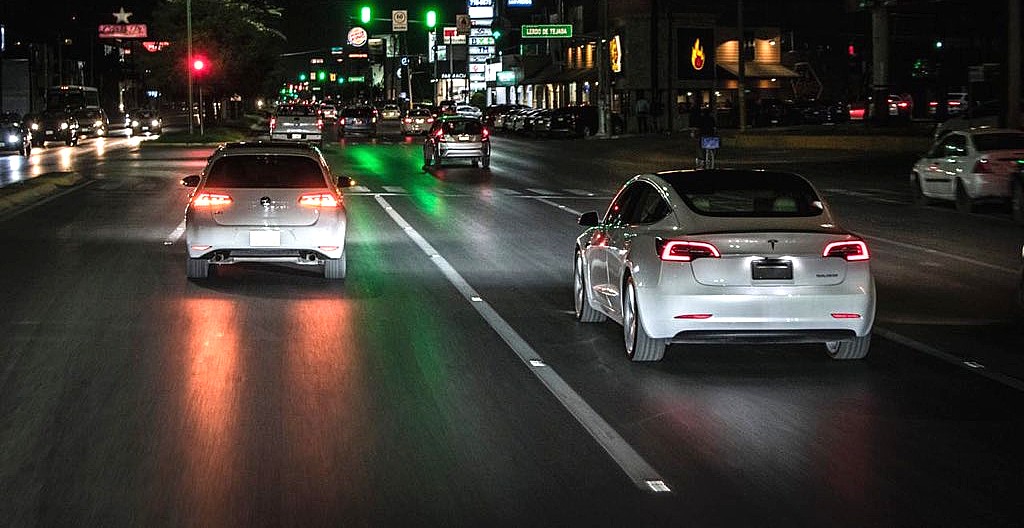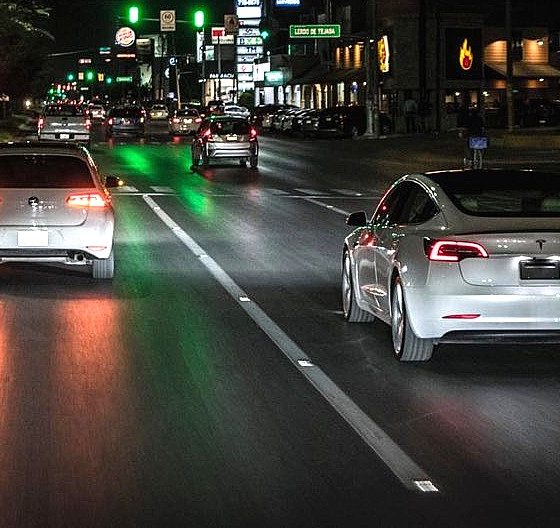In a flash of dramatic irony, Andrew Wheeler, the Administrator of the US Environmental Protection Agency, praised the Trump administration’s Safer Affordable Fuel Efficient (SAFE) Vehicles rule, a rollback of fuel economy standards that would allow automakers to sell more polluting vehicles in the United States.
“Too many reporters fail to mention one very important point: the Obama era CAFÉ standards were not attainable by the auto industry. The truth is, the SAFE rule sets realistic standards, will reduce pollution, and save lives!” Wheeler posted.
Such statements, of course, attracted strong responses. In a call with reporters on Tuesday, California attorney general Xavier Becerra remarked that the EPA Administrator’s Twitter announcement was downright wrong. “(EPA administrator Andrew Wheeler) issued a tweet saying that this new rule would save lives, and reduce pollution, and that it would provide significant benefits to the American economy. In each case, he’s wrong,” Becerra said.
On Tuesday, the National Highway Traffic Safety Administration and the Environmental Protection Agency announced the SAFE standards that will take the place of the Obama-era Corporate Average Fuel Economy (CAFE) rules, which required about 5% annual improvements in fuel efficiency every year from carmakers.
Under the CAFE rules, the EPA noted that automakers would have been required to sell cars and light trucks with an average fuel efficiency of about 54 miles per gallon in 2026 model cars. With the current administration’s SAFE rules, vehicles could simply average about 40 miles per gallon by 2026 to meet the new standards.
In a way, Wheeler’s tweet boiled down to one point. The old CAFE standards were simply unrealistic, and America needs the new SAFE rules to make sure automakers and car buyers win out. Interestingly enough, the EPA official’s post came amidst an ongoing climate crisis and a literal pandemic that involves a virus attacking people’s capability to breathe.
Bad timing and taste aside, the EPA Administrator appears to have conveniently forgotten one particular American carmaker that has had absolutely no problem meeting the “unrealistic” standards of the Obama-era CAFE rules. This carmaker currently stands as the most valuable US-based automaker by market cap, and in recent quarters, it has even turned a profit, highlighting the argument that there is a substantial demand and a solid business model for zero-emissions vehicles.

This carmaker, of course, is Tesla. The company had been producing electric cars since 2008, and it has been mass-producing vehicles since 2012. With the Model 3, Tesla started breaking into the mainstream market, with some car buyers trading in otherwise more affordable vehicles to acquire the electric sedan. A crossover, the Model Y, has begun deliveries ahead of schedule, and if initial impressions from professional reviewers are any indication, there’s a good chance that the all-electric crossover will be a disruptor as well.
With the United States’ SAFE rules, automakers like Ford and GM will likely have less incentive to push electric cars. This may be detrimental to both companies, considering that leaked production plans from both GM and Ford have shown that the veteran automakers are still committed to the internal combustion engine despite their pro-EV rhetoric. This could be a costly move for GM and Ford, since territories outside the United States, such as Europe and China, have committed to electrification.
But amidst all these, there is a silver lining. If veteran automakers like Ford and GM will not step up to the plate and provide good electric cars to meet the demand from buyers, a new breed of EV companies will. Tesla has proven that a well-designed, feature-rich, all-electric car like the Model 3 can dominate their established internal combustion counterparts. There’s a good chance that vehicles like the Cybertruck, or perhaps Rivian’s R1T, could do the same for high-end F-150s and RAM trucks.
In a way, the adjustment of the United States’ emissions standards could prove to be an opportunity for electric car makers. Beyond the United States, after all, authorities are going all-in on electric cars. And for some territories such as Europe and China, there is no more turning back.

News
Tesla Cybercab tests are going on overdrive with production-ready units
Tesla is ramping its real-world tests of the Cybercab, with multiple sightings of the vehicle being reported across social media this week.

Tesla is ramping its real-world tests of the Cybercab, with multiple sightings of the autonomous two-seater being reported across social media this week. Based on videos of the vehicle that have been shared online, it appears that Cybercab tests are underway across multiple states.
Recent Cybercab sightings
Reports of Cybercab tests have ramped this week, with a vehicle that looked like a production-ready prototype being spotted at Apple’s Visitor Center in California. The vehicle in this sighting was interesting as it was equipped with a steering wheel. The vehicle also featured some changes to the design of its brake lights.
The Cybercab was also filmed testing at the Fremont factory’s test track, which also seemed to involve a vehicle that looked production-ready. This also seemed to be the case for a Cybercab that was spotted in Austin, Texas, which happened to be undergoing real-world tests. Overall, these sightings suggest that Cybercab testing is fully underway, and the vehicle is really moving towards production.
Production design all but finalized?
Recently, a near-production-ready Cybercab was showcased at Tesla’s Santana Row showroom in San Jose. The vehicle was equipped with frameless windows, dual windshield wipers, powered butterfly door struts, an extended front splitter, an updated lightbar, new wheel covers, and a license plate bracket. Interior updates include redesigned dash/door panels, refined seats with center cupholders, updated carpet, and what appeared to be improved legroom.
There seems to be a pretty good chance that the Cybercab’s design has been all but finalized, at least considering Elon Musk’s comments at the 2025 Annual Shareholder Meeting. During the event, Musk confirmed that the vehicle will enter production around April 2026, and its production targets will be quite ambitious.
News
Tesla gets a win in Sweden as union withdraws potentially “illegal” blockade
As per recent reports, the Vision union’s planned anti-Tesla action might have been illegal.

Swedish union Vision has withdrawn its sympathy blockade against Tesla’s planned service center and showroom in Kalmar. As per recent reports, the Vision union’s planned anti-Tesla action might have been illegal.
Vision’s decision to pull the blockade
Vision announced the blockade in early December, stating that it was targeting the administrative handling of Tesla’s facility permits in Kalmar municipality. The sympathy measure was expected to start Monday, but was formally withdrawn via documents sent to the Mediation Institute and Kalmar Municipality last week.
As noted in a Daggers Arbete report, plans for the strike were ultimately pulled after employer group SKR highlighted potential illegality under the Public Employment Act. Vision stressed its continued backing for the Swedish labor model, though Deputy negotiation manager Oskar Pettersson explained that the Vision union and IF Metall made the decision to cancel the planned strike together.
“We will not continue to challenge the regulations,” Petterson said. “The objection was of a technical nature. We made the assessment together with IF Metall that we were not in a position to challenge the legal assessment of whether we could take this particular action against Tesla. Therefore, we chose to revoke the notice itself.”
The SKR’s warning
Petterson also stated that SKR’s technical objection to the Vision union’s planned anti-Tesla strike framed the protest as an unauthorized act. “It was a legal assessment of the situation. Both for us and for IF Metall, it is important to be clear that we stand for the Swedish model. But we should not continue to challenge the regulations and risk getting judgments that lead nowhere in the application of the regulations,” he said.
Vision ultimately canceled its planned blockade against Tesla on December 9. With Vision’s withdrawal, few obstacles remain for Tesla’s long-planned Kalmar site. A foreign electrical firm completed work this fall, and Tesla’s Careers page currently lists a full-time service manager position based there, signaling an imminent opening.
News
Tesla Semi program Director teases major improvements

Tesla Semi Program Director Dan Priestly teased the major improvements to the all-electric Class 8 truck on Thursday night, following the company’s decision to overhaul the design earlier this year.
Priestley said he drove the Semi on Thursday, and the improvements appear to be welcomed by one of the minds behind the project. “Our customers are going to love it,” he concluded.
Just drove the redesigned Semi. Our customers are going to love it. https://t.co/KZ88sf1CDL
— Dan Priestley (@danWpriestley) December 19, 2025
The small detail does not seem like much, but it is coming from someone who has been involved in the development of the truck from A to Z. Priestley has been involved in the Semi program since November 2015 and has slowly worked his way through the ranks, and currently stands as the Director of the program.
Tesla Semi undergoes major redesign as dedicated factory preps for deliveries
Tesla made some major changes to the Semi design as it announced at the 2025 Annual Shareholder Meeting that it changed the look and design to welcome improvements in efficiency.
Initially, Tesla adopted the blade-like light bar for the Semi, similar to the one that is present on the Model Y Premium and the Cybertruck.
Additionally, there are some slight aesthetic changes to help with efficiency, including a redesigned bumper with improved aero channels, a smaller wraparound windshield, and a smoother roofline for better aero performance.
All of these changes came as the company’s Semi Factory, which is located on Gigafactory Nevada’s property, was finishing up construction in preparation for initial production phases, as Tesla is planning to ramp up manufacturing next year. CEO Elon Musk has said the Semi has attracted “ridiculous demand.”
The Semi has already gathered many large companies that have signed up to buy units, including Frito-Lay and PepsiCo., which have been helping Tesla test the vehicle in a pilot program to test range, efficiency, and other important metrics that will be a major selling point.
Tesla will be the Semi’s first user, though, and the truck will help solve some of the company’s logistics needs in the coming years.










